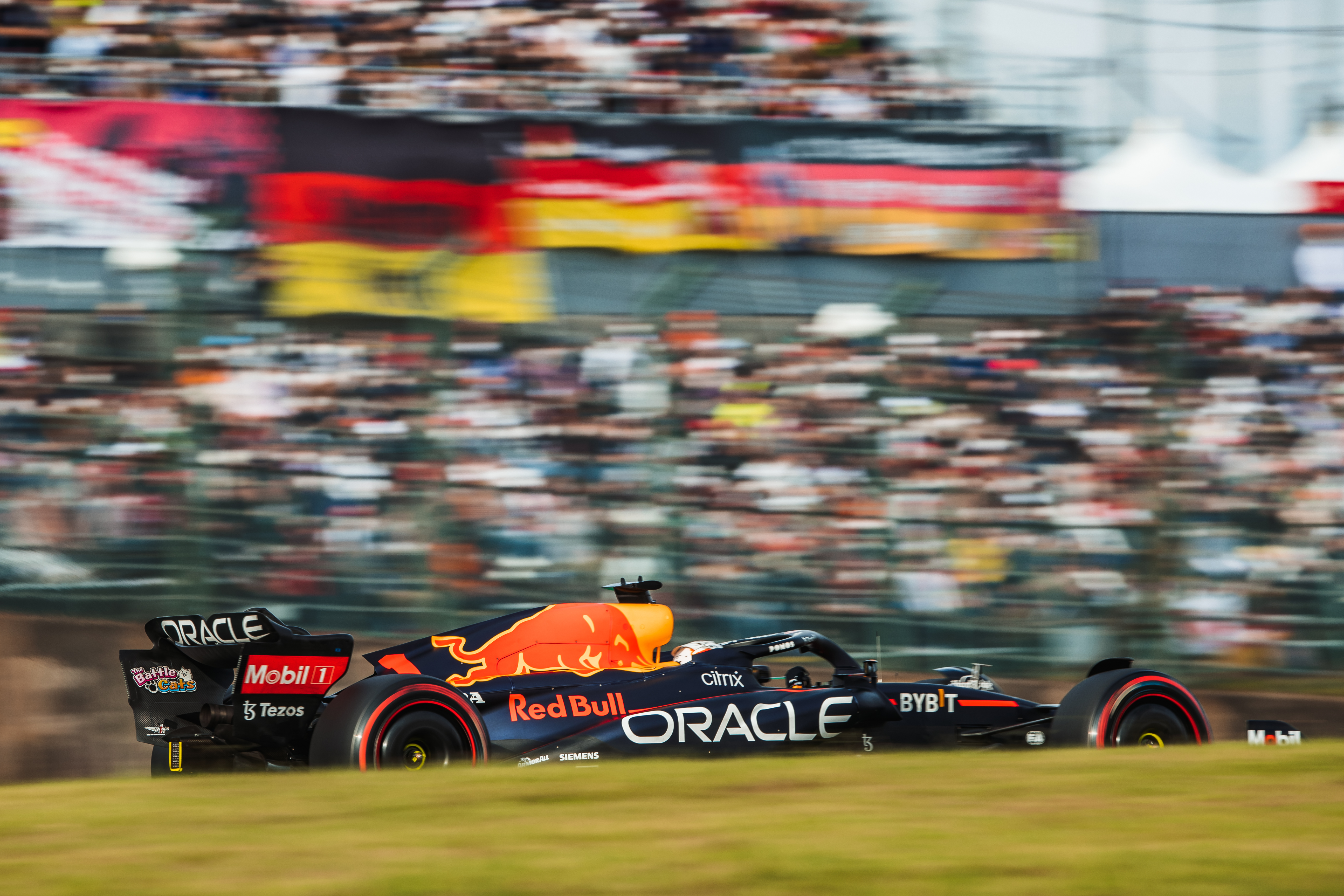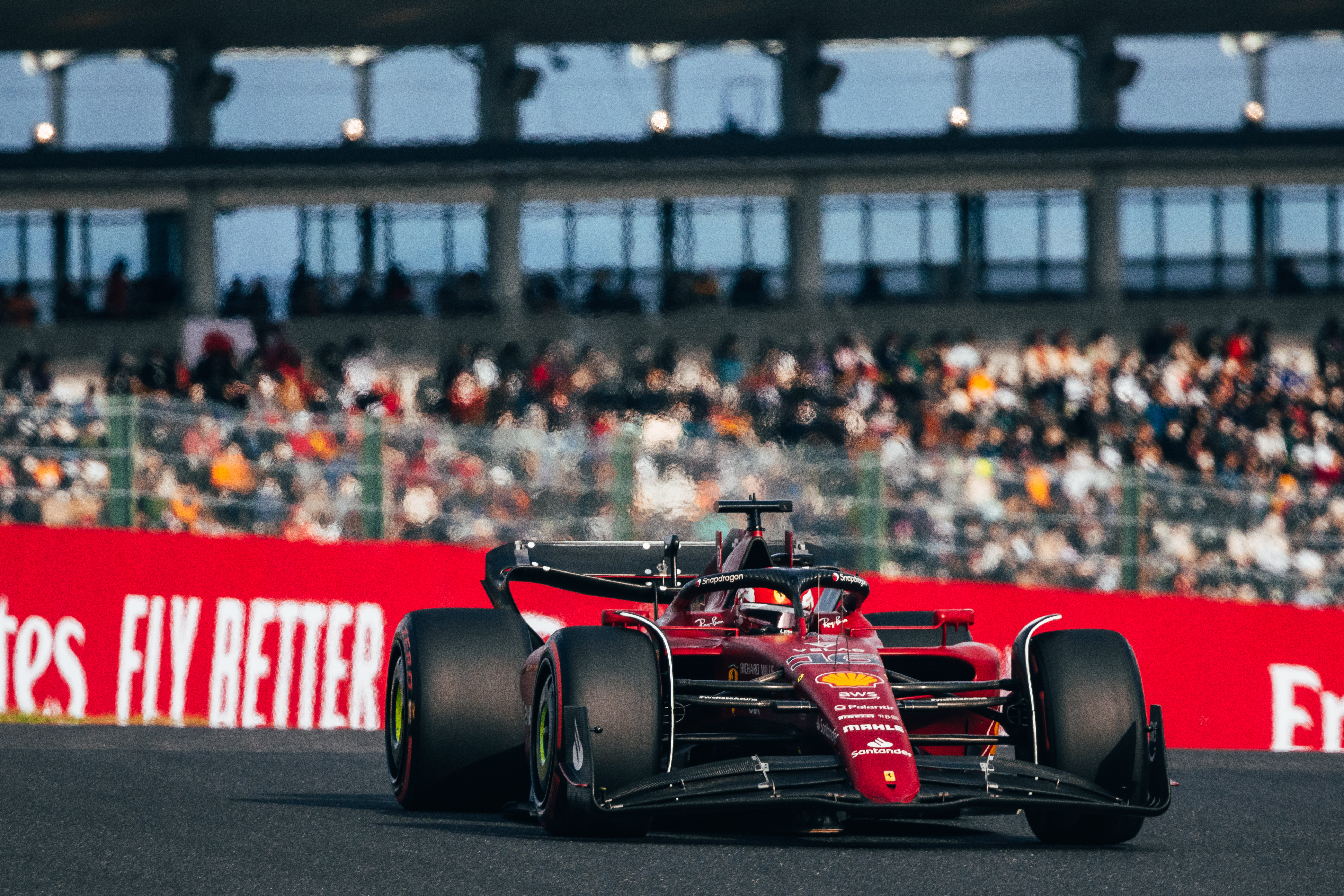In the end Max Verstappen on pole and Charles Leclerc alongside him were separated by 0.01s. The gap should really have been greater (because Verstappen’s final run was scrappier than his first and was slower even as the track appeared to be getting faster).
In the season’s first half it could be almost taken for granted that the Ferrari would out-qualify the Red Bull, even if the comparison favoured the Red Bull on race days.
Since the Hungarian Grand Prix (the race before the introduction of the technical directive concerning the mounting of the plank), Red Bull’s advantage has extended over Ferrari so that it’s now usually as quick as the Ferrari on Saturdays but invariably faster on Sundays.
There are a few things to unpack in that picture, but essentially the Red Bull has got faster and the Ferrari slower since late July.
Faster Red Bull

The first side of that equation is fairly simple to assess and indeed Verstappen talked us through it in the post-qualifying conference: “In the beginning, our car was heavily overweight. Which, once you go down to low fuel [in qualifying] it’s extra painful,” because the excess car weight is a greater proportion of the total when you run it with minimal fuel, the weight disadvantage is more punishing of lap time in qualifying than in the race.
The car was on a steady diet through the early season and the accumulated benefit has been very evident in the latter part. Not only that but where the weight has been removed from has improved the weight distribution to the extent that the car can be more balanced to Verstappen’s preferred tastes. As he explained at Monza, “The car was a bit lazy in turn in and was prone to brake locking.”
So Ferrari’s initial weight advantage has steadily evaporated. “The improvements on the car definitely help,” says Max, “But I still think our car is better on a Sunday than a Saturday and luckily under the new regulations even if our car is not so amazing on the Saturday, it doesn’t really matter because you can still pass on most tracks.”
Both cars have received a steady flow of updates but Red Bull’s regular changes to the floor edges seem to have been more targeted and successful than Ferrari’s single big floor changes (one in France and another here). Ferrari has regularly swapped in the practices between the pre-France floor and the first updated one, as if it was uncertain it was bringing the full benefits promised.
Slower Ferrari

But the Ferrari’s lost performance, evident since Hungary, which has hit it in both qualifying and, especially, the race, is rooted in how it uses its tyres. It was always a little prone on front-limited tracks to opening out its outer front into graining. This lost it the Imola sprint race and Miami.
But it also tended to be better at controlling its rear temperatures than the Red Bull. But since Hungary, that has not been the case; since that time the front graining limitation is still latent but the superior rear tyre temperature control has disappeared. There now seems to be no ideal set-up window where both axles are happy.
At Suzuka, this was evident even over the course of a single lap of qualifying, as Leclerc explained. “The car was good, but I was struggling with the tyres to put everything together. The harder I pushed in the first sector the more I was slow in the last sector.”
There is a correlation evident between this narrow window and the imposition of the ‘porpoising’ Tech Directive 039, in force since Spa, the race after Hungary. Ferrari’s interpretation of the plank mounting method prior to the TD allowed a more cushioned ride between plank and floor.
So even when it porpoised at high speed on the straights, the instant the driver hit the brakes, the porpoising would stop as the plank sunk into floor and ended the aerodynamic resonance. The TD has brought the Ferrari a harsher ride and this seems to have played a part in its greater tyre difficulties.
Red Bull did not use the same technical solution as Ferrari for the plank and floor even before the TD. Maybe the key strength of the car is how much of its downforce it retains even as the rear ride height is increased. So even if the new TD did entail an increase in the ride height it would otherwise be able to run, it has had relatively little impact on performance.
The Q3 laps

This technical backdrop was relevant to what played out in qualifying. When looking at a straight comparison between Verstappen’s 1m39.304s pole and Leclerc’s second-fastest 1m39.314s lap, we see the following:
Sector 1: Red Bull 0.033s faster
Sector 2: Ferrari 0.24s faster
Sector 3: Red Bull 0.217s faster
The Ferrari’s biggest advantage comes in the middle sector: from the exit of the harpin, through the Turn 12 kink, Spoon and 130R it’s significantly faster. In sector 1 it’s faster in the first part of the Esses and through Dunlop, and the Red Bull only retains its tiny Sector 1 advantage by how much time it gains between the start/finish straight and Turn 2 and on the run down the hill towards the Degners (Turns 8-9).
With only a tiny Sector 1 deficit and a significant Sector 2 advantage and only the very short (less than 18s) Sector 3 left, you’d expect Leclerc to be on a comfortable pole. It all goes wrong for him at the chicane as those overworked rear tyres don’t allow him to comfortably accommodate his very aggressive entry speed. He takes time out of Verstappen into the turn but loses way more than that coming out.
Having been almost a quarter of a second down by the end of sector 2, Verstappen – his rear tyres still in their working temperature window – scratches ahead overall with only around 50 metres of the lap left.
He has thus put himself in the perfect place for his title-clinching task: to win the race and set the fastest lap. As he says, “We need a perfect race to win it tomorrow but this is a good start.”



